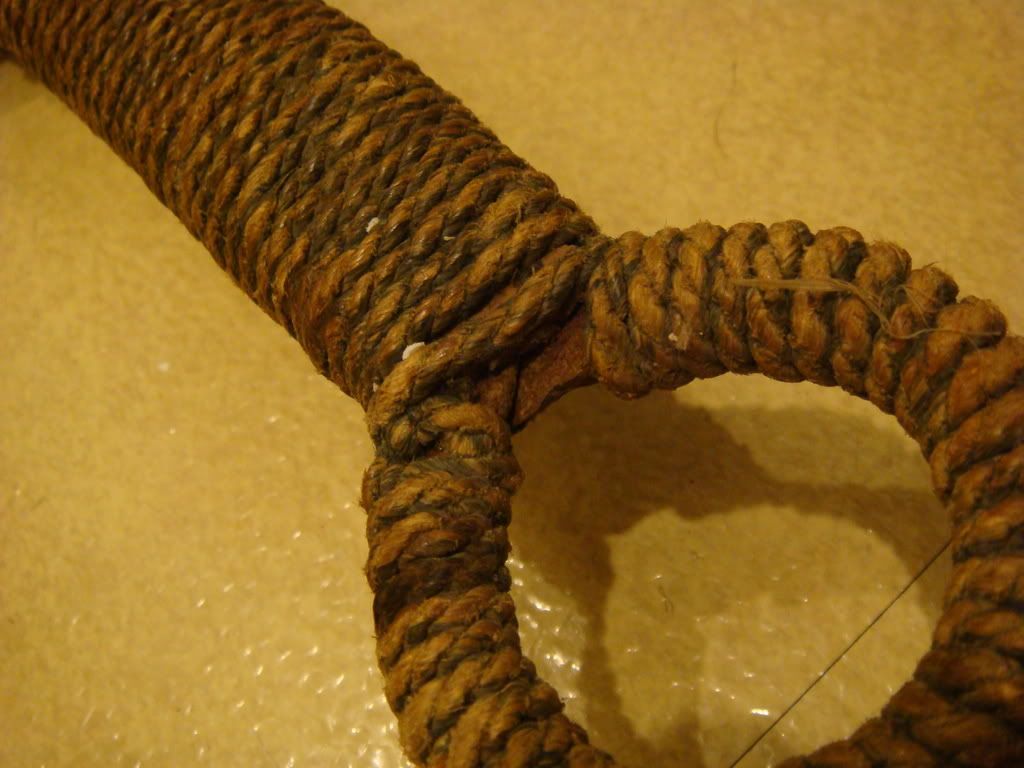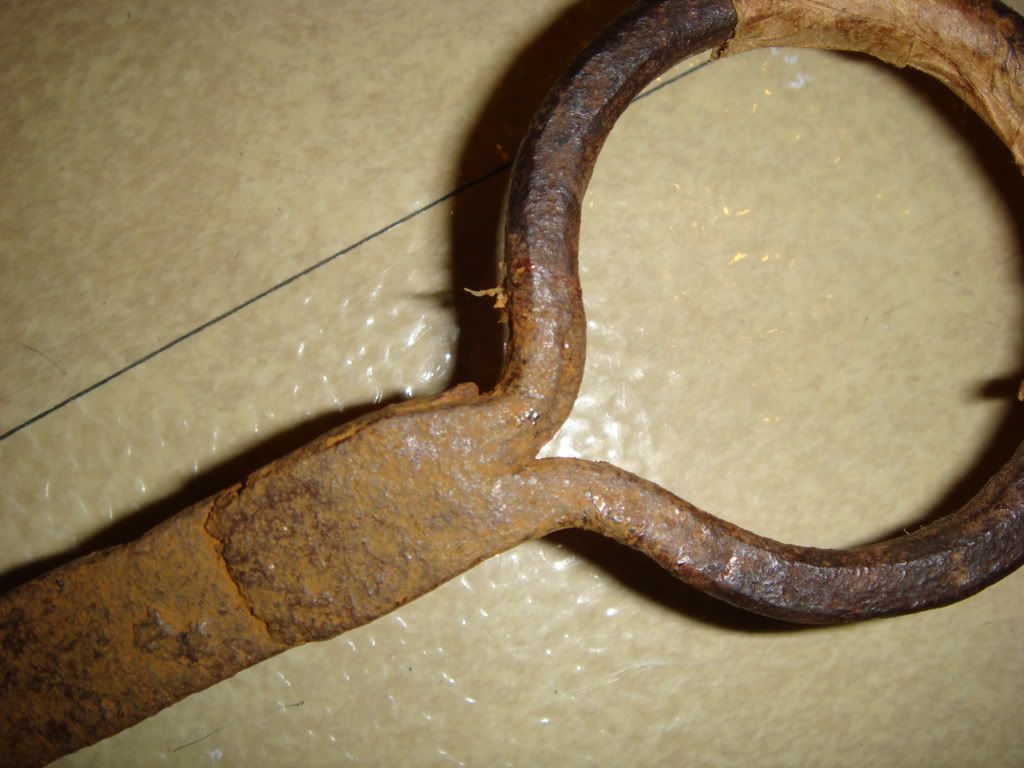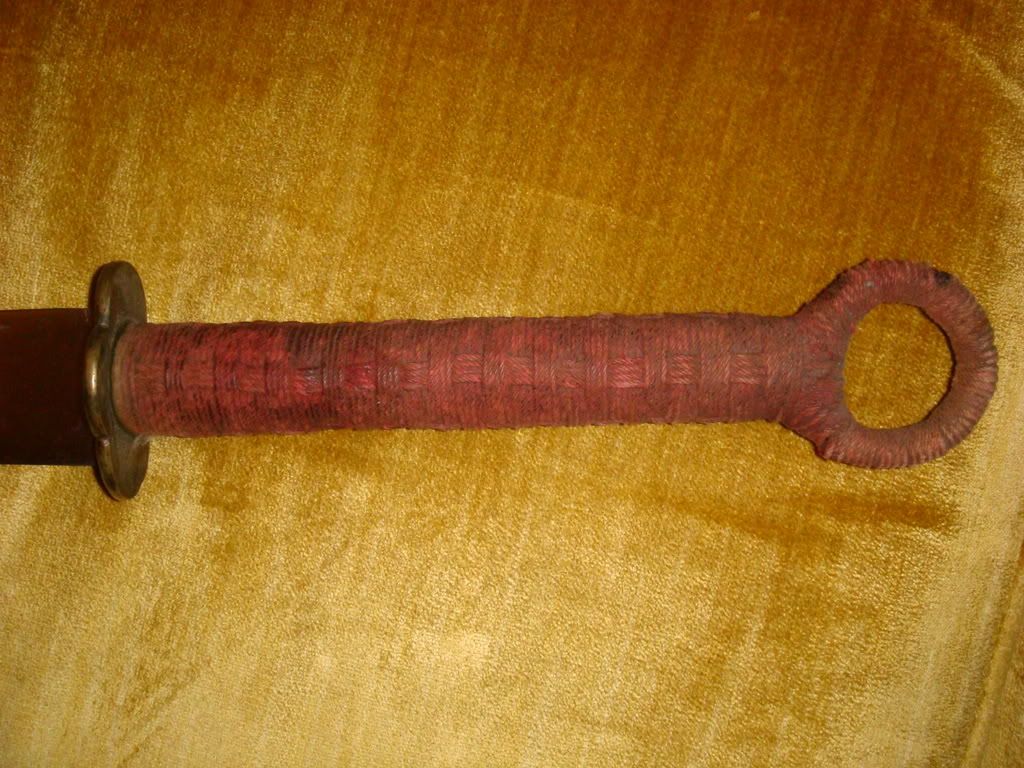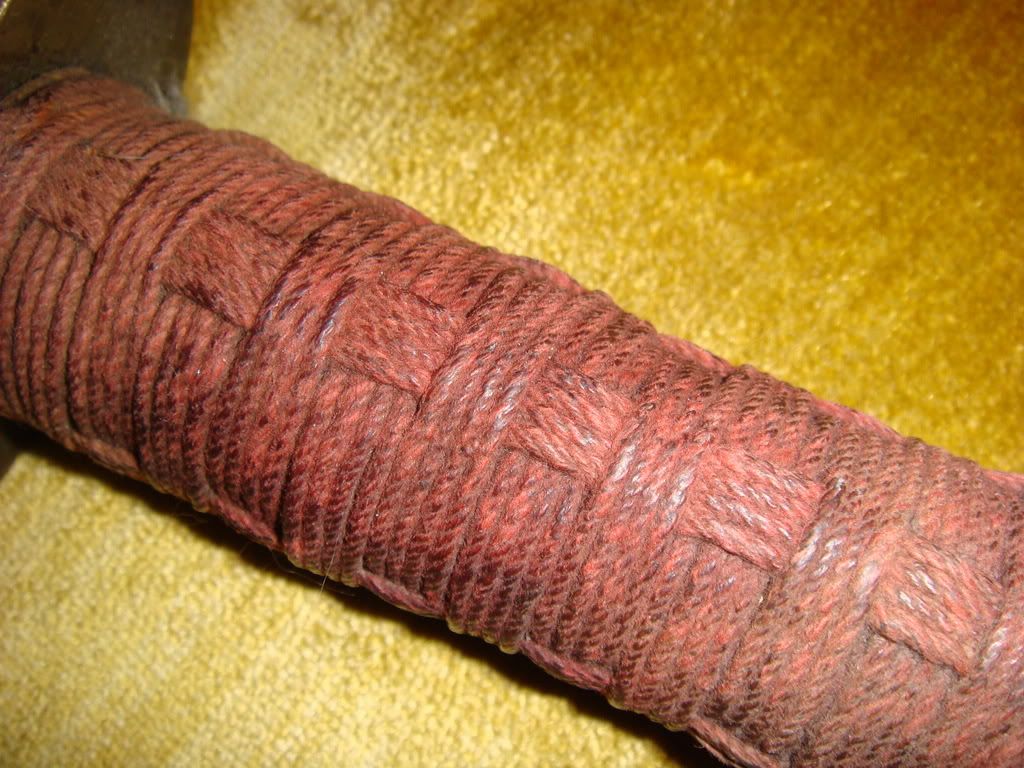
 |
|
|
|
|
#1 |
|
Member
Join Date: Dec 2004
Location: California
Posts: 1,036
|
It's interesting to note how the lamellar structure of the blade shows a controlled and rather attractive undulating pattern, indicating that the smith took the time to do a decent forging job, and yet the fullers wander drunkenly to and fro. Yet, considering that these weapons were for the most part the products of village smithies, or the makers of domestic knives and tools, it's not that hard to understand. The art of cutting long channels into blade surfaces is a skill that a swordsmith would be expected to practice, but an artisan who makes farm implements or carpenters' tools would have little opportunity to use such techniques. I have a large carpenter's adze, probably late Qing, whose blade shows considerable skill in lamellar forging and localized heat treating, but it's not the sort of thing that requires knowledge of fullering.
Regarding the cord: The color looks more orange than red in the photos, but don't know if that's due to the effect of the flash. Be that as it may, this is something that can easily be replaced, if desired, with something of a more suitable color. It's worth mentioning that it's also important what the cord material is. If it's a synthetic material, of course it should go. But if it's a cotton or hemp-based fiber, at least the material is historical and the color of the existing wrap can be adjusted and "antiqued" if replacement is not desired. These dadao hilts were originally wrapped in a variety of materials: thick twine-like cord, narrow strips of thick cloth (called "bias tape" in the tailoring trade) in a basketweave pattern, and even split rattan (common on Vietnamese examples). Colors can vary: natural fiber (varying shades of brown), cord dyed or lacquered red or black, cloth tape with dark red and green interwoven, etc. So there's no one material, style, or color that's appropriate. So long as you don't try to use nylon parachute cord when restoring your hilt! A natural fiber can easily be dyed. I've used good quality leather dyes with good effect (they make great wood stains as well), they come in a variety of shades, are available in smaller sized bottles, and the colors are blendable. Fiebing's is a good brand, I've purchased this product from Jantz Supply in Davis, OK (www.knifemaking.com) The mahogany shade is an attractive dark reddish-brown that is appropriate. (YOU CAN MAKE A LIGHTER COLOR BY POURING SOME OF IT INTO A BOWL OR JAR, AND ADDING ALCOHOL -- EXPERIMENT TIL YOU FIND A SHADE YOU LIKE). A shoemaker's shop might be the source for other colors, in case you want to opt for a deep vermillion red. Apply with a dauber or brush until the color is uniform, and let dry overnight. Then wipe strenuously with a discarded piece of towel to remove excess pigment. You can add a sheen of age to the dry surface by rubbing in some Johnson's paste-type furniture wax, and buffing with the same brush you use to shine your shoes. The residual shoe polish in the brush will darken the high spots, simulating the oils that gets rubbed into the surface after years of handling. If you want more of a "Long March veteran" look to it, practice your dadao form with the weapon just after you finish cleaning your BBQ grill. |
|
|

|
|
|
#2 |
|
Member
Join Date: Dec 2004
Posts: 1,247
|
Hi All,
I'm enjoying this, as I have a couple of modern dao blades that I want to properly hilt some day (the hilts they came with were junk). Question on the flat wrap: to my eye it looks like a simple three-ply braid. If so, you can manufacture as much as you want by getting appropriate cord and braiding away (or asking a child of your acquaintance to do it for you). One question: how is that ring pommel attached to the handle? Best, F |
|
|

|
|
|
#3 | |||
|
Member
Join Date: Oct 2005
Location: Boston, MA
Posts: 21
|
Quote:
 Quote:
Quote:
 When I start experimenting with the wrap, I'll post some follow up to get further input to see if I'm getting things right. Yu-Ming Last edited by Yu-Ming Chang; 6th January 2009 at 10:31 PM. |
|||
|
|

|
|
|
#4 |
|
Member
Join Date: Oct 2007
Posts: 2,818
|
Hi Fearn,
I have only ever seen one old dao without the wooden hilt and the ring pommel was actually part of the tang, extended all the way and doubled back just like a long hair pin so to speak, mayhap this was a one of a kind and they are attached differently but that's all I know. Well there you go, looks like a posted a nano second after Yu-ming. There is a good example, slightly different from what I have seen. Yu-Ming, do you have any images of you dao's hilt prior to re-wrapping, they may show the ring pommel arrangement better? Gav |
|
|

|
|
|
#5 | |
|
Member
Join Date: Oct 2005
Location: Boston, MA
Posts: 21
|
Quote:
I didn't take any pictures of the hilt prior to re-wrapping, but I'll take some when I start experimenting with re-re-wrapping. Yu-Ming |
|
|
|

|
|
|
#6 |
|
Member
Join Date: Oct 2005
Location: Boston, MA
Posts: 21
|
Fearn and Gav,
I just remembered a piece that I have in my collection where the ring pommel was made separately and then lap-welded on the tang.  Yu-Ming |
|
|

|
|
|
#7 |
|
Member
Join Date: Oct 2005
Location: Boston, MA
Posts: 21
|
While I haven't had time to antique up the cord wrap on the dadao I had restored, I did have a chance to take some pictures of a Republican era dadao I once owned with its intact original wrap. The red cord wrap is somewhat faded and darkened with grease and oil from use. The interwoven bands are of cord, not cloth strips as I remembered. In any case, I thought a look at an original wrap from a 50-60 year piece might be of interest to some of us.
  
|
|
|

|
|
|
#8 |
|
Member
Join Date: Dec 2004
Location: California
Posts: 1,036
|
Hi, Yu-ming
That's a nice example, with a clean blade that appears to be of nice quality for one of these, and intact cord wrapping with mellow fading and lovely patina. Great to find one of these whose grip covering isn't all ratty and chewed up. The style of the wrapping (a simple spiral with four longitudinal "basketweave" strips) is quite common on dadao. On occasion, the longitudinal bands are cloth strips, not cord. Red on red is most often seen, although I've run into red and green, red and white, etc. As I've stated in a previous post, the material seen more often in Vietnam is split rattan, or a heavy twine that is twisted from sisal or similar plant fiber. |
|
|

|
 |
|
|